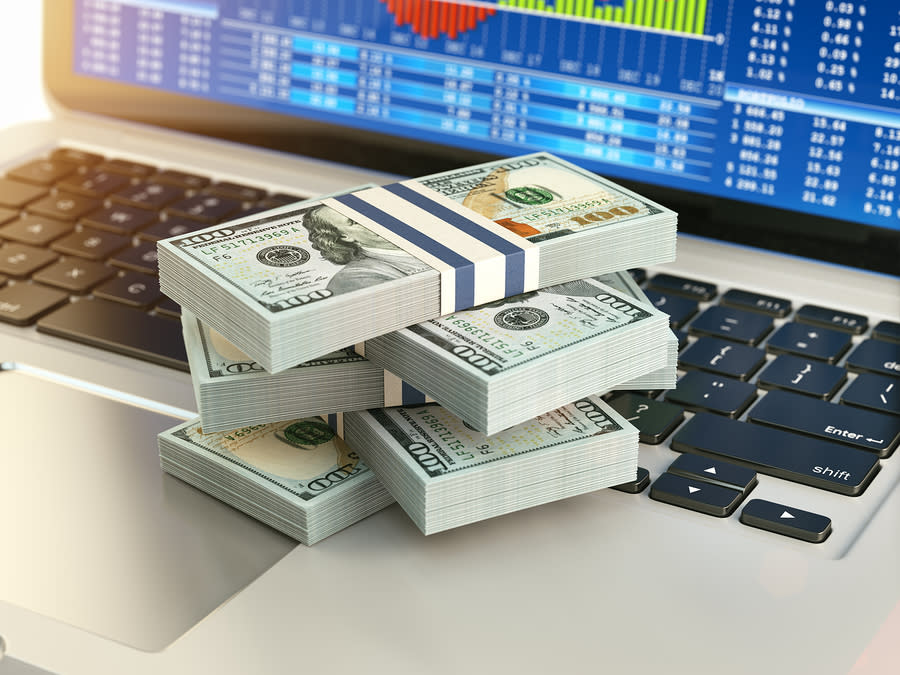3 Top Dividend Stocks to Maximize Your Retirement Income

Strange but true: seniors fear death less than running out of money in retirement.
And older Americans have legitimate reasons for this worry, even if they have dutifully saved for their golden years. That's because the traditional ways people manage retirement may no longer provide enough income to meet expenses - and with people generally living longer, the principal retirement savings is exhausted far too early in the retirement period.
In today's economic environment, traditional income investments are not working.
In the past, investors going into retirement could invest in bonds and count on attractive yields to produce steady, reliable income streams to fund a predictable retirement. 10-year Treasury bond rates in the late 1990s hovered around 6.50%, whereas the current rate is much lower.
The impact of this rate decline is sizable: over 20 years, the difference in yield for a $1 million investment in 10-year Treasuries is more than $1 million.
And lower bond yields aren't the only potential problem seniors are facing. Today's retirees aren't feeling as secure as they once did about Social Security, either. Benefit checks will still be coming for the foreseeable future, but based on current estimates, Social Security funds will run out of money in 2035.
So what can retirees do? You could dramatically reduce your expenses, and go out on a limb hoping your Social Security benefits don't diminish. On the other hand, you could opt for an alternative investment that gives a steady, higher-rate income stream to supplant lessening bond yields.
Invest in Dividend Stocks
As a replacement for low yielding Treasury bonds (and other bond options), we believe dividend-paying stocks from high quality companies offer low risk and stable, predictable income investors in retirement seek.
Look for stocks that have paid steady, increasing dividends for years (or decades), and have not cut their dividends even during recessions.
One way to identify suitable candidates is to look for stocks with an average dividend yield of 3%, and positive average annual dividend growth. Many stocks increase dividends over time, helping to offset the effects of inflation.
Here are three dividend-paying stocks retirees should consider for their nest egg portfolio.
Bristol Myers Squibb (BMY) is currently shelling out a dividend of $0.57 per share, with a dividend yield of 3.11%. This compares to the Medical - Biomedical and Genetics industry's yield of 0% and the S&P 500's yield of 1.63%. The company's annualized dividend growth in the past year was 10.2%. Check Bristol Myers Squibb (BMY) dividend history here>>>
Morgan Stanley (MS) is paying out a dividend of $0.78 per share at the moment, with a dividend yield of 3.19% compared to the Financial - Investment Bank industry's yield of 0.22% and the S&P 500's yield. The annualized dividend growth of the company was 10.71% over the past year. Check Morgan Stanley (MS) dividend history here>>>
Currently paying a dividend of $0.33 per share, Unum (UNM) has a dividend yield of 3.24%. This is compared to the Insurance - Accident and Health industry's yield of 2.24% and the S&P 500's current yield. Annualized dividend growth for the company in the past year was 10%. Check Unum (UNM) dividend history here>>>
But aren't stocks generally more risky than bonds?
Overall, that is true. But stocks are a broad class, and you can reduce the risks significantly by selecting high-quality dividend stocks that can generate regular, predictable income and can also decrease the volatility of your portfolio compared to the overall stock market.
An upside to adding dividend stocks to your retirement portfolio: they can help lessen the effects of inflation, since many dividend-paying companies (especially blue chip stocks) generally increase their dividends over time.
Thinking about dividend-focused mutual funds or ETFs? Watch out for fees.
If you're interested in investing in dividends, but are thinking about mutual funds or ETFs rather than stocks, beware of fees. Mutual funds and specialized ETFs may carry high fees, which could lower the overall gains you earn from dividends, undercutting your dividend income strategy. Be sure to look for funds with low fees if you decide on this approach.
Bottom Line
Pursuing a dividend investing strategy can help protect your retirement portfolio. Whether you choose to invest in stocks or through low-fee mutual funds or ETFs, this approach can potentially help you achieve a more secure and enjoyable retirement.
Want the latest recommendations from Zacks Investment Research? Today, you can download 7 Best Stocks for the Next 30 Days. Click to get this free report
Bristol Myers Squibb Company (BMY) : Free Stock Analysis Report
Morgan Stanley (MS) : Free Stock Analysis Report
Unum Group (UNM) : Free Stock Analysis Report

 Yahoo Finance
Yahoo Finance 